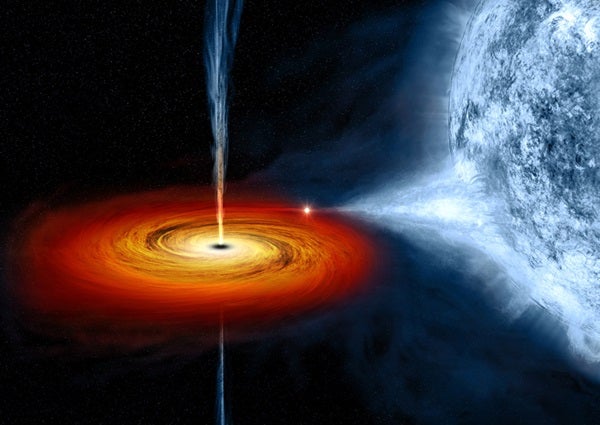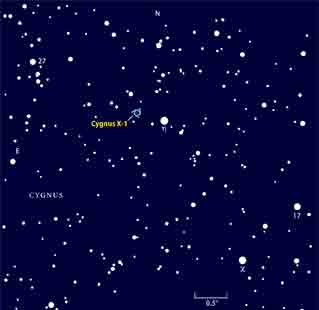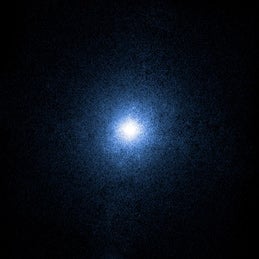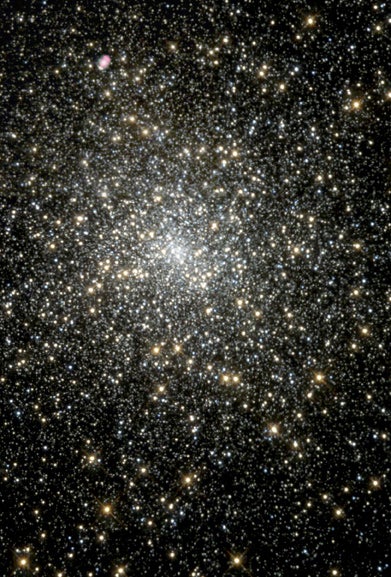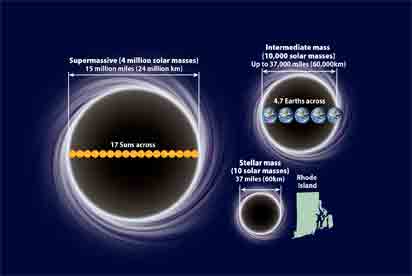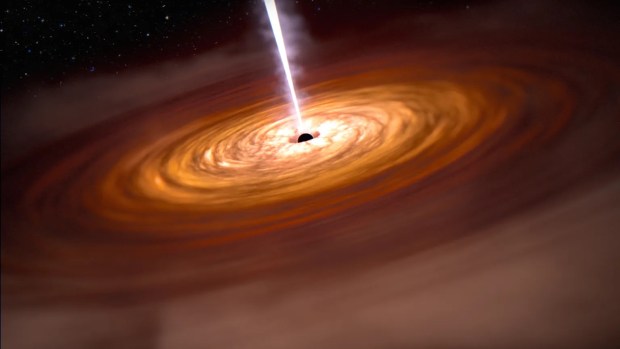Until Swiss astronomers Michel Mayor and Didier Queloz discovered the first planet orbiting a Sun-like star in 1995, scientists faced a dilemma: They thought such planets should be common, but they had no proof. Fast-forward 17 years and the verdict is in — the number of confirmed exoplanets now totals several hundred and should pass the 1,000 mark in the next year or two.
The discovery of black holes followed a similar trajectory. By the early 1990s, most astronomers suspected these bizarre objects existed, but confirmation was hard to come by. Scientists like to say that extraordinary claims require extraordinary proof, and things don’t get much more astonishing than black holes. These bodies possess a gravitational pull so powerful that nothing, not even light, can escape their clutches. Information about what happens inside a black hole can never leave — a cosmic equivalent to Las Vegas.
Fortunately, the suburbs of Vegas are more forgiving. Material in a black hole’s vicinity suffers conspicuously from the intense gravity. Wayward stars move abnormally fast, and gas becomes superheated and radiates copious amounts of light. Astronomers confirm a black hole’s existence when they see these signatures and can eliminate all other possible causes. In the past 15 years or so, the tally of black holes in our galaxy has reached 19 — 18 reside in X-ray-emitting binary star systems, and one lurks in the Milky Way’s core. But many more likely remain beyond astronomers’ current reach.
By definition, black holes give off no light. This makes the idea of trying to see one sound a bit challenging. Fortunately, black holes don’t always live in isolation, and one of the most famous — Cygnus X-1 — has a partner that shows up through any backyard instrument.
Cygnus X-1’s stellar companion is a blue supergiant cataloged as SAO 69181. This star shines at magnitude 8.9 in the central regions of the constellation Cygnus the Swan, which passes nearly overhead on September evenings for observers at mid-northern latitudes.
Use the circular StarDome map at the center of this issue to locate Cygnus. Next, home in on Eta (η) Cygni, a 4th-magnitude star that lies 13° southwest of the Swan’s luminary, 1st-magnitude Deneb. Scan 0.4° east-northeast of Eta to find SAO 69181. It’s the middle object in a line of three equally bright stars. When you spot it, you won’t be seeing light from the black hole, but it will be literally from the next closest thing. — R. T.
From Newton to Einstein
In the late 1700s, British professor John Michell and French astronomer and mathematician Pierre-Simon Laplace advanced the idea of what Laplace called “dark bodies.” Using Isaac Newton’s concepts of light and gravity, they reasoned that the gravitational pull of a massive star could be large enough to prevent light from escaping.
Unfortunately, Newton’s theory could not describe what happens when gravity grows this strong. That understanding wouldn’t come until Albert Einstein developed his general theory of relativity in the 1910s. Relativity, which treats gravity as a distortion of space-time, allows physicists to describe black holes in gory detail. Still, it took decades before most scientists considered these objects more than theoretical curiosities.
The reality of black holes began to emerge once astronomers understood how massive stars die. If a star begins life with more than about eight times the Sun’s mass, it will not experience a quiet demise. When such a star exhausts its nuclear fuel, its core collapses. This triggers a shock wave that destroys the rest of the star in a
brilliant supernova that can shine with the light of 10 billion Suns. In most cases, the core left behind weighs between 1.4 and 3 solar masses and has been crushed into a sphere the size of a major city. A single teaspoonful of this so-called neutron star would weigh close to a trillion tons.
Yet even this exotic end state pales in comparison with what happens to the rarest of stars that start life with more than 30 solar masses. In 1939, physicists J. Robert Oppenheimer and Hartland Snyder showed that when such a star dies, its collapsed core (which weighs more than three Suns) is too heavy to settle down as a neutron star. It creates a region of space-time cut off from the rest of the universe because no light can ever escape. Thirty years later, physicist John Wheeler coined the descriptive term black holes for these objects.
Black holes possess only three characteristics: mass, spin, and charge. All other properties of the collapsing star are lost. And because stars rarely have any excess positive or negative charge, mass and spin describe most black holes.
Because telescopes cannot see inside the event horizon, astronomers must search for a black hole’s impact on its immediate surroundings. Some binary star systems offer a perfect environment. The massive stars that create black holes evolve quickly, typically running through their nuclear fuel in a few million years.
After the star explodes (the companion usually survives), the black hole’s intense gravity may pull material from its neighbor’s outer layers. This gas falls toward the black hole and forms an accretion disk that swirls around the invisible object like water circling a drain. As the material moves ever faster, friction among the atoms heats it to millions of degrees. Gas at this temperature emits lots of X-rays, which Earth-orbiting observatories can detect.
So, to detect a black hole, astronomers look for an X-ray-emitting binary system comprising one normal star and an invisible but massive companion. Lots of these objects exist in the Milky Way, but not all contain black holes. Neutron stars in a binary can produce the same behavior, and because they radiate little light, they can’t be detected across large distances.
To differentiate between the two possibilities, astronomers need to pin down the compact object’s mass. General relativity says that a stable neutron star can’t weigh more than three Suns. Any invisible companion bigger than that must be a black hole — assuming, as almost every scientist does, that relativity accurately describes such strong gravitational fields. To find the object’s mass, astronomers must measure the binary system’s orbit precisely.
Ronald Remillard of the Massachusetts Institute of Technology in Cambridge and Jeffrey McClintock of the Harvard-Smithsonian Center for Astrophysics (also in Cambridge) have compiled the most up-to-date list of black holes in binary systems. Our galaxy contains 18; their locations and properties appear on page 49.
But this list likely forms only the tip of the iceberg. Remillard and McClintock count 20 more binary systems that show similar X-ray signatures but have no detailed orbital information to provide masses. (Astronomers haven’t even seen an optical counterpart in most of them.) And nearly every scientist suspects far greater numbers of black holes exist either alone in space or in more widely separated binaries that don’t emit X-rays. Astronomers estimate that the Milky Way holds between 100 million and 1 billion black holes.

